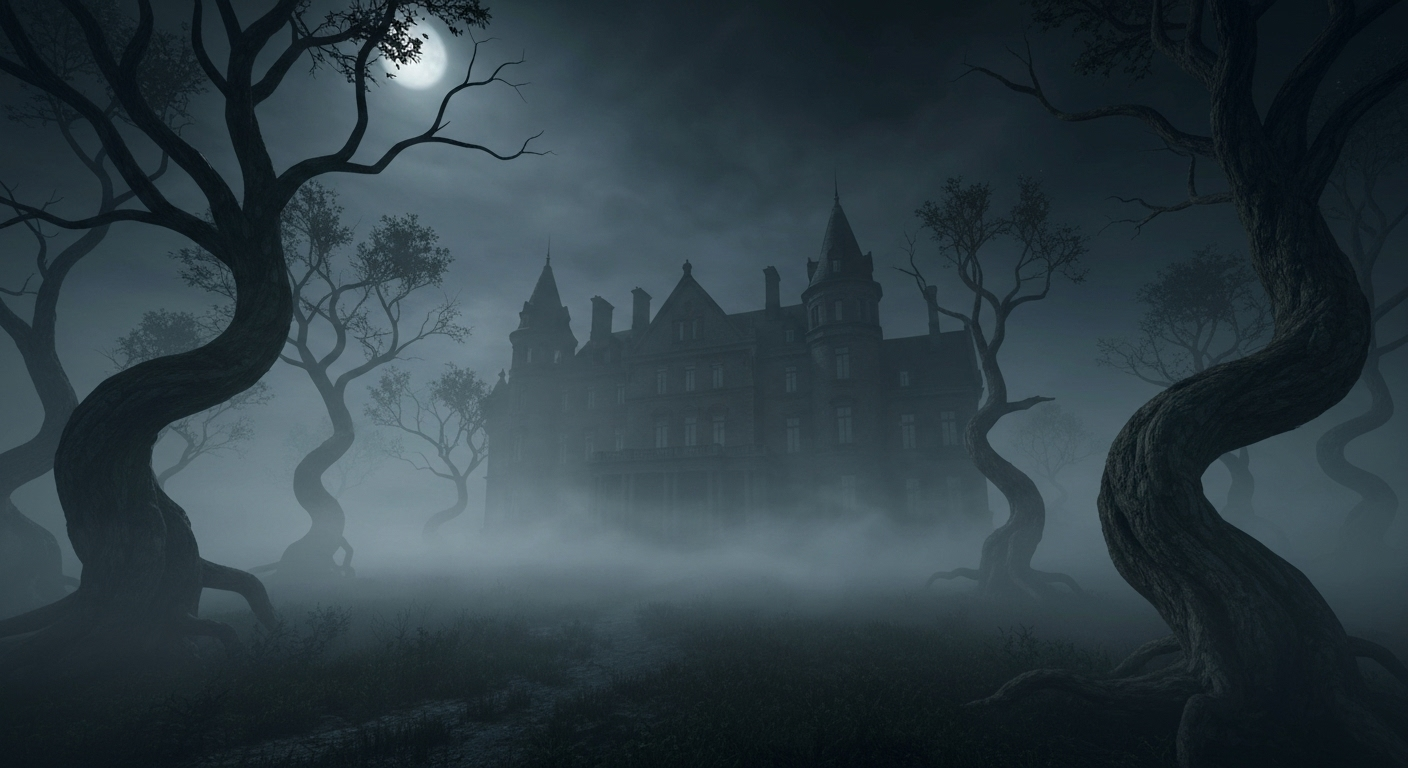Key Highlights
- Discover estates around the world that are considered cursed due to tragic pasts and horror stories.
- Learn about the chilling tales behind famous haunted houses like the Winchester Mystery House and Lalaurie Mansion.
- Understand the difference between a simply haunted house and a truly cursed estate.
- Explore what makes a manor or property cursed, from historical tragedies to paranormal phenomena.
- Find out how a haunted reputation can impact real estate values and disclosure laws.
- Uncover the common signs that might suggest a property is under a curse.
Introduction
Have you ever wondered what makes a house more than just a home? Some buildings carry stories so dark they become legends. These aren't just any old ghost stories; they're tales of cursed estates where misfortune seems to cling to the very walls. From sprawling manors to infamous private homes, these places are notorious for their eerie pasts, chilling histories, and even haunted accessories. Join us as we unlock the doors to the world's most terrifying properties, exploring the chilling histories that make them a real-life haunted house experience.
10 Cursed Estates That Will Haunt Your Dreams Forever
Across the globe, certain properties are known for more than their architecture. These are the cursed estates, places where horror stories feel all too real. Each haunted mansion, manor, or castle on this list, including a notably haunted estate in Georgia, has a dark history filled with tragedy and paranormal claims that continue to frighten visitors today.
Are you ready to tour these infamous locations? We're about to explore the stories behind each old mansion, from a home built to confuse ghosts to a plantation haunted by a "White Witch" and the White House. These are the places that have earned their terrifying reputations.
1. Winchester Mystery House, California
The Winchester Mystery House stands as one of America's most famous haunted houses, born from one woman's deep-seated fear. After her husband, the inventor of the Winchester rifle, passed away, Sarah Winchester came to believe she was haunted by the spirits of everyone killed by the weapon. A spiritual medium advised her that the only way to appease these vengeful souls was to continuously build a house for them.
For 36 years, construction on the San Jose mansion never ceased. The result is a sprawling, bizarre complex designed to confuse spirits. The home features 160 rooms, staircases that lead to nowhere, and doors that open to solid walls or dangerous drops. These strange occurrences in its design were all part of Sarah's plan to escape the supernatural phenomena she believed plagued her.
Today, the Winchester Mystery House is a popular destination for tourists and ghost hunters alike. They come to witness the architectural oddities and hope to experience some of the strange occurrences that make this house a landmark of paranormal lore.
2. Lalaurie Mansion, Louisiana

In the heart of New Orleans, Louisiana, the Lalaurie Mansion looks elegant from the outside, but its history is one of unimaginable cruelty. In 1831, the wealthy socialite Madame Delphine Lalaurie purchased the home. To the public, she was a respected figure, but behind closed doors, a tragic event was unfolding. Rumors of her mistreatment of the enslaved people in her care began to circulate.
The truth was exposed when a fire broke out in 1834. When townspeople rushed in to help, they broke down the door to the slave quarters and made a horrific discovery. They found several individuals who had been brutally tortured and starved. The citizens, enraged by the cruelty, chased Madame Lalaurie out of the city and destroyed many of her belongings.
Though she was never brought to justice, her dark legacy lives on. The mansion is now considered one of the most haunted houses in New York City and the country, with countless ghost stories circulating about the spirits of her victims. It remains a grim reminder of the horrific events that transpired within its walls.
3. Monte Cristo Homestead, Australia
Known as Australia's most haunted mansion, the Monte Cristo Homestead has a past steeped in tragedy. Built in 1884 for the Crawley family, the home seemed idyllic until a series of devastating events began. The family's infant daughter died after a servant dropped her down the stairs, with the servant claiming an unseen force pushed the child from her arms.
This was only the beginning of the misfortunes. After the head of the household, Christopher Crawley, died in 1910, his wife Elizabeth became a recluse. During her isolation, more tragedies occurred, including a pregnant servant falling from a balcony of the local tavern and a young boy burning to death. These events fueled the belief that supernatural entities were at play.
When new owners purchased the property in 1963, they reported strange lights and the palpable presence of ghosts. Today, the Monte Cristo Homestead is open for ghost adventures, inviting brave visitors to experience its paranormal activity firsthand and investigate the lingering spirits of its tragic past.
4. Borley Rectory, England
Once called "the most haunted house in England," the Borley Rectory was notorious for its paranormal activity. Local folklore tells a tragic story of a monk and a nun from a nearby convent who fell in love. When they tried to elope, they were caught. The monk was executed, and the nun was walled up alive within the convent walls. The rectory was later built on this haunted ground.
Residents of the rectory consistently reported ghostly apparitions, strange sounds, and shadowy figures. The stories became so famous that they attracted the attention of ghost hunter Harry Price in the early 20th century. He documented numerous phenomena, including objects moving on their own and cryptic messages appearing on the walls, attributed to the building's creator, further solidifying the building's spooky reputation.
In a strange twist, a spirit supposedly warned Price during a séance that the rectory would burn down. The prediction came true, and the building was destroyed by fire in 1939 before being demolished. Though it no longer stands, the legend of Borley Rectory remains a cornerstone of English ghost lore.
5. Franklin Castle, Ohio
While many famous haunted houses are known for a single tragic event, some, like those in Ohio, gain their reputation from a long history of misfortune. Franklin Castle is often cited as one of the state's most haunted locations, with stories of sorrow woven into its very foundation. Like many old, grand homes, it has seen its share of tragedy, which many believe has led to significant supernatural activity, especially around Halloween.
A castle, with its imposing structure and labyrinthine layout, can easily feel eerie. When you add tales of family tragedies, unexplained deaths, and secret passages, including whispers akin to those associated with the dybbuk box, it's no wonder that a place can become known as cursed. The feeling of being watched, disembodied voices, and doors slamming shut are common reports in such locations.
These stories, passed down through generations, turn a historic building into a legendary haunted house. Whether the events are fact or folklore, the perception of a curse is powerful enough to cement the castle's reputation as a hub for paranormal encounters, attracting Americans and those fascinated by supernatural activity.
6. Poveglia Island Estate, Italy
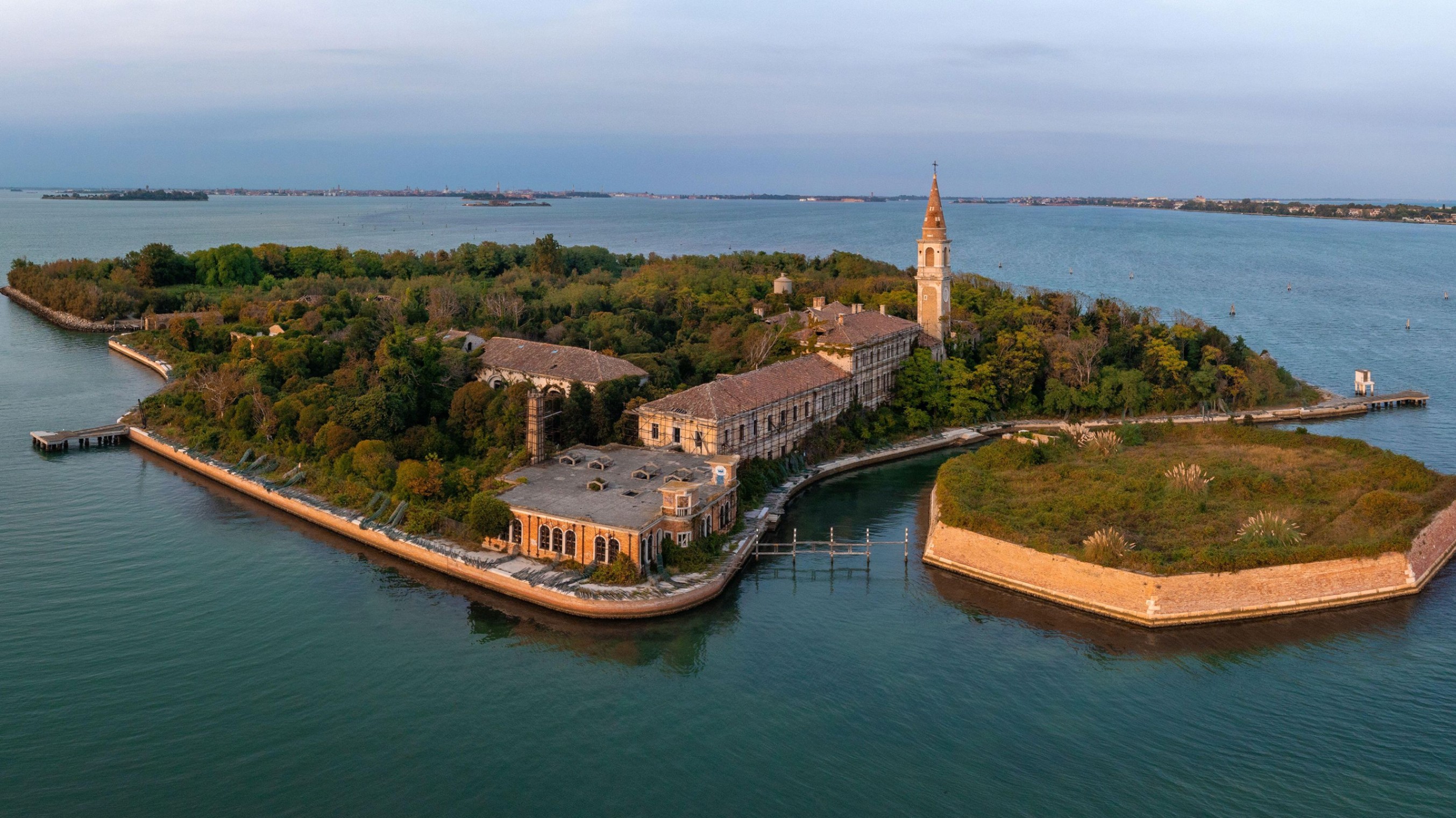
Some places seem destined for darkness, and Poveglia Island in Italy is one of them. Though not a traditional castle or estate, the entire island is considered one of the most haunted locations on Earth. Its history is incredibly grim, having served as a quarantine station for plague victims and later as a mental asylum where a doctor reportedly performed cruel experiments on patients.
This long history of suffering and tragic events has cemented its reputation as a ghost town and a place of immense paranormal activity. Visitors and paranormal investigators who have dared to step on its shores report hearing disembodied screams, seeing shadowy figures, and feeling an overwhelming sense of dread. The energy of countless deaths seems to have soaked into the soil and the decaying buildings.
The island is now abandoned, with its structures left to crumble. Its reputation is so terrifying that local fishermen often refuse to go near it. This desolate and haunted island estate stands as a chilling monument to its dark and painful past.
7. The Myrtles Plantation, Louisiana
Plantations in Louisiana are often the subject of ghost stories, and The Myrtles Plantation is frequently called one of America's most haunted houses. This sprawling antebellum manor is rumored to be home to at least a dozen spirits, each with a tragic story tied to the property's long and complex history. The most famous legend involves a cursed mirror that supposedly holds the spirits of a former owner and her children.
The sheer number of ghost stories associated with the property in Michigan has made it a prime destination for ghost hunters and paranormal enthusiasts. Visitors report a wide range of phenomena, from seeing full-body apparitions in period clothing to hearing the unexplained sounds of a crying baby. The grand architecture of the manor, with its sweeping verandas and moss-draped oaks, adds to the eerie atmosphere.
Whether you're a skeptic or a believer, the tales surrounding The Myrtles are compelling. The combination of historical tragedy and persistent paranormal claims ensures this Louisiana manor remains a focal point for those seeking to connect with the supernatural.
8. The Villisca Ax Murder House, Iowa
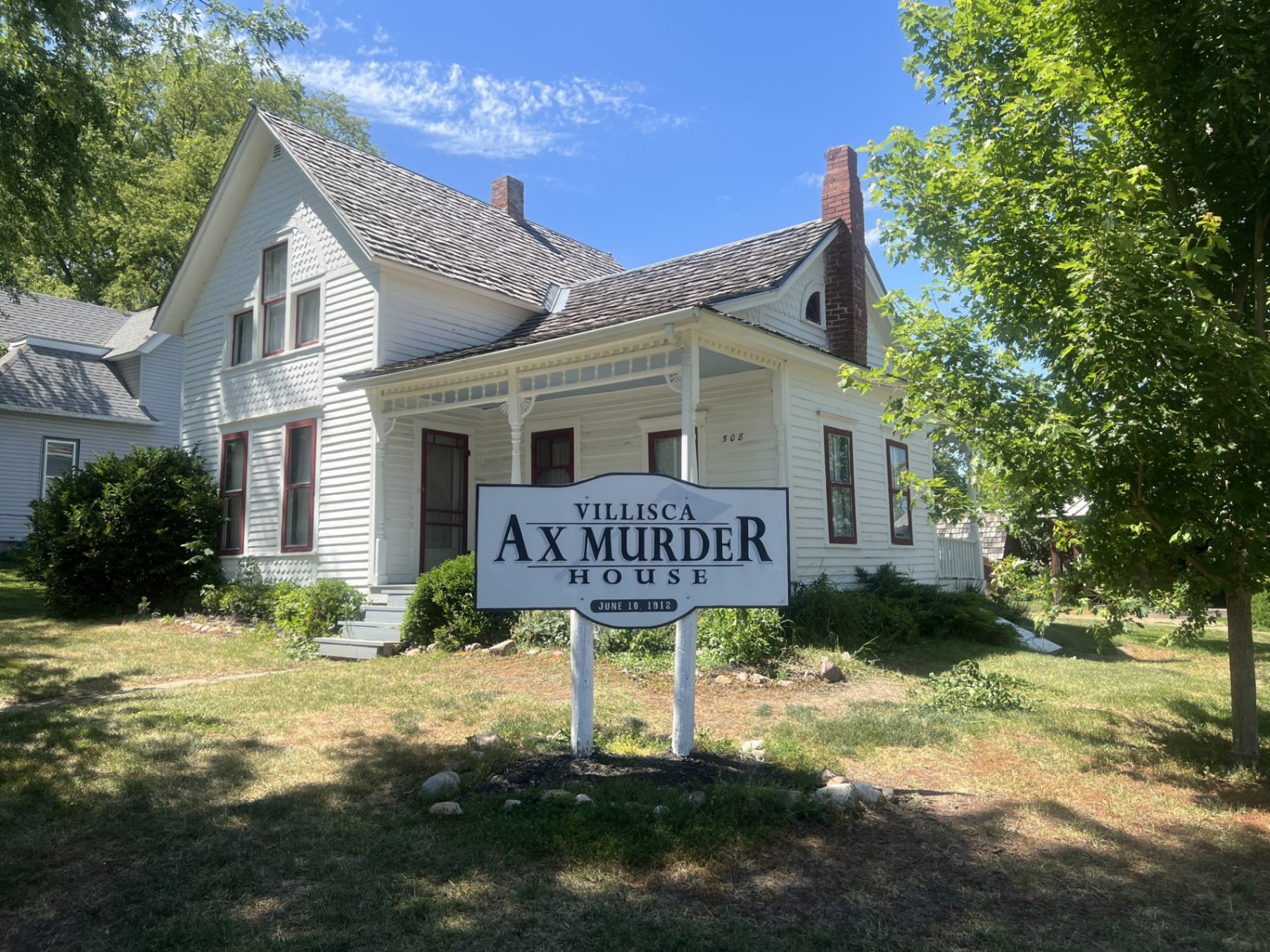
In the quiet town of Villisca, Iowa, stands a house forever marked by a horrific and unsolved crime. On the night of June 9, 1912, a tragic event unfolded when an intruder entered the Moore family home and brutally murdered all eight people inside, including six children. The crime shocked the nation, and because the killer was never found, a dark cloud of suspicion and fear hung over the town.
Since that night, the house has been the subject of countless ghost stories. The spirits of the Moore family and their two young guests from Virginia are said to remain, their presence felt by those who dare to enter. Visitors and paranormal investigators have reported hearing children's voices, seeing shadowy figures, and recording disembodied whispers.
Today, the Villisca Ax Murder House is preserved as it was in 1912 and is open for tours and overnight stays. It serves as a chilling memorial to the victims and a magnet for those fascinated by the paranormal, standing as one of the most infamous haunted houses in the United States.
9. Blickling Hall, England
Blickling Hall in Norfolk, England, is a grand Jacobean manor with a royal ghost. This stately home was the childhood home of Anne Boleyn, the ill-fated second wife of King Henry VIII. In his desperate quest for a male heir, the king accused Anne of adultery and had her beheaded on May 19, 1536. Her tragic end has linked her spirit to Blickling Hall forever.
According to legend, Anne's ghost returns to the estate every year on the anniversary of her execution. Eyewitnesses have reported terrifying apparitions of a headless Anne Boleyn arriving in a carriage pulled by a headless horseman. She is said to roam the halls of the castle-like manor, carrying her severed head with her in the afterlife.
These annual sightings have made Blickling Hall one of England's most famous haunted houses. The National Trust, which manages the property, even named it the country's most haunted home in October. The tale of its most famous ghostly resident continues to draw visitors hoping to catch a glimpse of the tragic queen.
10. Rose Hall, Jamaica
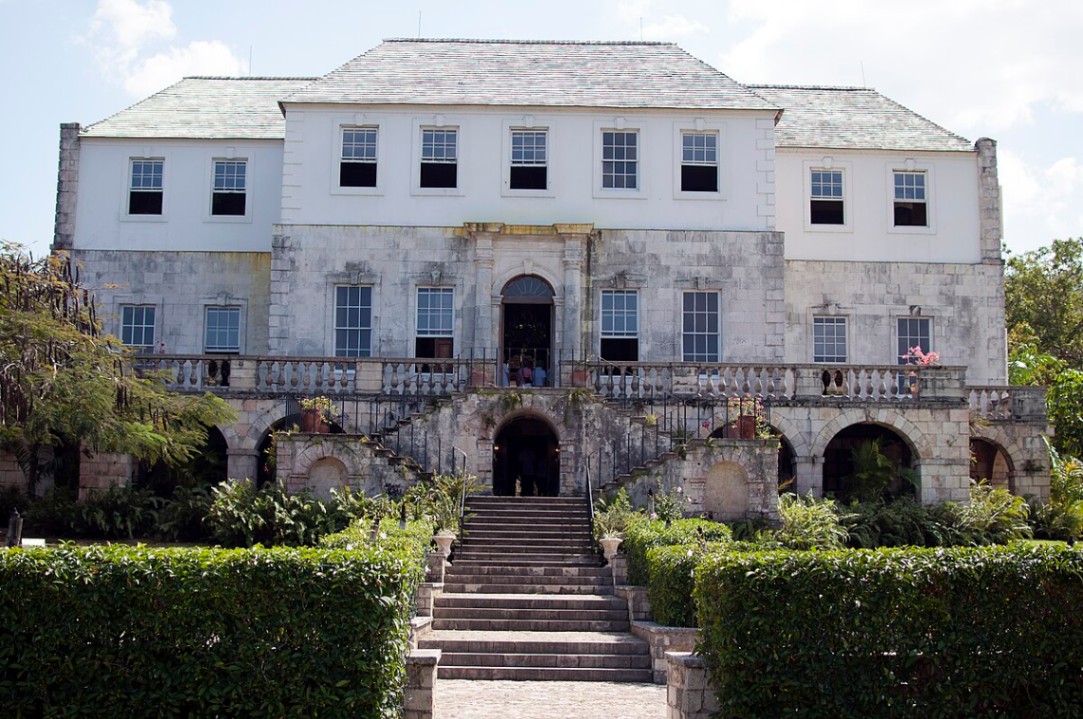
On the island of Jamaica, the beautiful Rose Hall manor holds the dark legend of Annie Palmer, the "White Witch." Local legends say that Annie, who grew up learning voodoo, was a cruel and murderous plantation owner in the 18th century. Unsatisfied with her husband, she took enslaved men as lovers and then killed them to keep her secrets.
Annie's reign of terror didn't stop there. She is said to have poisoned her first husband and murdered two subsequent husbands to inherit their wealth. Her cruelty became infamous, and tales of her dark magic and a hidden pit for punishing people spread across the island. According to one story, she was eventually strangled to death by the grandfather of a housekeeper she had cursed.
Today, Rose Hall is a popular tourist attraction, but many believe the spirits of Annie and her victims still roam the property. Visitors and employees report hearing screams, slamming doors, and other supernatural activity, making this haunted house a chilling destination rooted in dark Jamaican folklore, reminiscent of themes found in Stephen King’s works.
What Makes an Estate Cursed?
What turns a beautiful property into a cursed estate? It's often a combination of dark history and enduring folklore. A single tragic event is enough to create stories of a haunted house, but a curse implies something more—a lingering misfortune that affects the land and anyone who lives there.
This sense of a persistent curse is often fueled by a string of unexplained tragedies, consistent reports of paranormal phenomena, and local myths. Let's explore the key factors that contribute to an estate earning its cursed and dreaded reputation.
Historical tragedies and legends
The foundation of nearly every cursed estate is a history marked by tragedy. A violent or untimely death, especially a murder or suicide, can leave a dark stain on a property, giving rise to beliefs that the spirits of the deceased remain. These events become the core of local legends that are passed down through generations, growing more elaborate with each telling.
A single tragic event can be enough to label a place as a haunted house in the UK, but a pattern of misfortune often leads to the belief that a property is truly cursed. When multiple bad things happen in one place, it no longer seems like a coincidence. People begin to believe that a malevolent force is attached to the land itself.
Some of the most common historical events include:
- Brutal murders, such as the Villisca ax murders.
- The profound suffering of individuals, like at the Lalaurie Mansion.
- A series of unfortunate deaths, as seen at the Monte Cristo Homestead.
Paranormal activity and ghost sightings
Persistent paranormal activity is one of the most convincing signs that an estate might be more than just old and creaky. While many old homes have odd noises, cursed estates are known for consistent and often unsettling supernatural activity. These occurrences go beyond simple bumps in the night and can be deeply frightening for residents and visitors.
These experiences are what turn historical tragedies into ongoing ghost stories. When multiple people report the same phenomena over many years, it strengthens the belief that spirits are present. The consistency of these reports is often taken as proof that the haunting is real.
Common signs of paranormal activity include:
- Full-body apparitions, like the headless ghost of Anne Boleyn.
- Disembodied voices, screams, or unexplained music.
- Objects moving on their own, flying across rooms, or doors slamming shut.
Unexplained misfortunes and deaths
Sometimes, a curse is defined not just by ghosts but by a continuous stream of bad luck. When a property seems to bring misfortune to everyone who lives there, it develops a reputation for being cursed. The Deane House, for example, only became known as a haunted house after it was moved and a series of tragic events, including a suicide and a murder, occurred within its walls, which could be discussed further in this blog.
This pattern of tragedy suggests that the negative energy is not just tied to a single spirit but to the property itself. People start to believe the land or the building is tainted, causing harm to all who inhabit it. The legend of James Dean's cursed Porsche, which was involved in several car crash accidents after his death, is a similar example of an object seemingly carrying a curse.
These unexplained misfortunes, stacking up one after another, are often more terrifying than a simple ghost sighting. It implies a malevolent force actively causing harm, a key element in the lore of any cursed or haunted house that experiences such supernatural phenomena.
Local myths and superstitions
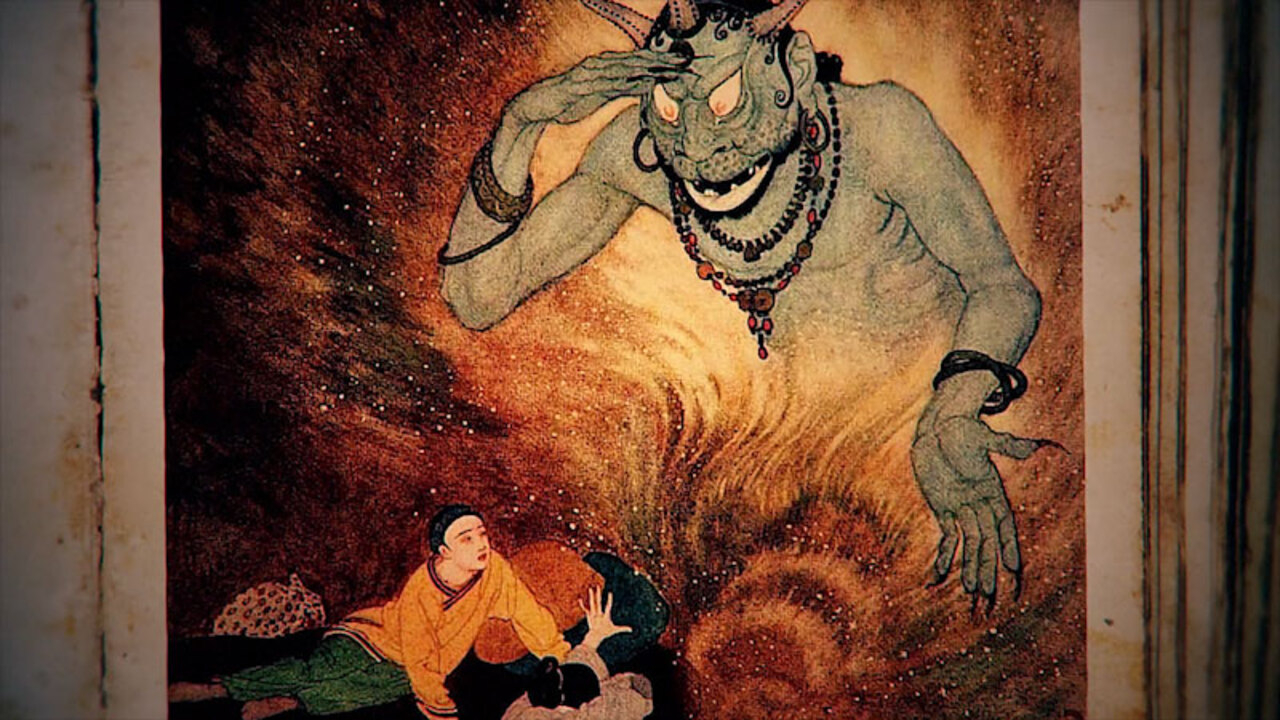
Local myths and cultural superstitions play a huge role in labeling an estate as cursed. These stories, woven into the fabric of a community, can transform an old building into a legendary haunted house. The tale of Annie Palmer, the "White Witch" of Rose Hall, is a perfect example of how folklore can create a terrifying narrative that lasts for centuries.
In many cultures, there's a strong belief in spirits and curses. In the Middle East, for instance, spirits known as jinn are said to haunt vacant places. In Japan, the tradition of creating ghost houses, or obakeyashiki, is linked to Buddhist beliefs about ancestral spirits. These cultural contexts make it easier for stories of a curse to take root and be believed.
Key elements of these myths often include:
- A powerful figure who placed a curse on the land or building.
- A connection to dark practices like voodoo or black magic, amplifying the fear.
Haunted Houses vs. Cursed Estates
You've probably heard the terms "haunted house" and "cursed estate" used in horror films and stories, but is there a difference? While both are spooky, the distinction lies in the nature and scope of the paranormal threat. A haunted house is typically perceived as being inhabited by one or more spirits of the deceased, often former residents.
A cursed estate, on the other hand, suggests a much broader and more malevolent influence. The negativity isn't just tied to a ghost but to the property itself, bringing misfortune to anyone who comes in contact with it. Let's look closer at these differences.
Key differences in folklore and real estate
In folklore, the main difference between a haunted house and a cursed estate is the source of the problem. A haunting is often personal—a spirit is tied to a place because of a past event. A curse, however, is an active, malevolent force that affects the property itself, almost like a disease. This force can cause bad luck, tragedy, or intense paranormal activity for anyone who owns or even enters the property, much like themes explored in Shirley Jackson’s work.
This distinction has real-world implications, especially in real estate. A "haunted" reputation might attract niche buyers, but a "cursed" label suggests ongoing danger and misfortune, which can severely damage a property's value. The Stambovsky v. Ackley case in New York even legally recognized that a house's haunted reputation could impair its value.
Ultimately, a haunted house may have a ghost or demons, but a cursed estate has a fundamental problem. The curse is seen as an attribute of the property itself, making it a far more intimidating and permanent issue for any potential owner.
Why estates are more feared than houses
The word "estate" often evokes a greater sense of dread than "house" in horror stories, and there are a few reasons for this. Estates, which include large properties like a manor, plantation, or castle, have a scale that amplifies the fear. Their size implies more space for dark secrets and more history to draw from.
A sprawling estate or manor often has a more complex and darker past than a typical suburban home. Plantations, for example, are tied to the immense suffering of enslaved people, creating a foundation for powerful and widespread hauntings. The sheer number of lives and deaths associated with a large estate can lead to the belief that it holds more spiritual energy.
Here’s why estates are often more feared:
- Greater scale: More rooms and land mean more places for spirits to hide and tragedies to occur.
- Deeper history: Estates often have centuries of history, increasing the chances of a dark past.
- Collective tragedy: Locations like plantations or asylums are associated with the suffering of many, not just one family.
How terminology affects perception
Language has a powerful impact on our perception of the paranormal. Calling a property a "haunted house" is spooky, but labeling it a "cursed estate" elevates the threat to a different level. The word "house" feels familiar and contained, while "estate" or "manor" suggests something grand, imposing, and much harder to control or escape.
The term "cursed" is also more menacing than "haunted." A haunting implies the presence of ghosts, which might be benign or simply residual energy. A curse, however, suggests an active, malevolent intent. It implies that the property itself is malicious and will bring harm to those who reside there. This changes the perception from a passive haunting to an active threat.
This change in terminology shapes our expectations. When you hear "cursed estate," you anticipate a more intense and dangerous experience. It primes you for stories of relentless misfortune and powerful, dark forces, making the location seem far more terrifying than a simple haunted house.
Impact of Cursed Estates on Real Estate
Beyond the horror stories, a cursed estate's reputation has a very real impact on its physical-world value. Would you pay full price for a haunted house in the first place? For many, the answer is no. A property's dark history can scare away potential buyers and significantly lower its market price, creating unique challenges for sellers and opportunities for brave buyers.
This intersection of the supernatural and real estate has even led to legal precedents regarding what sellers must disclose to buyers. Let's examine how a paranormal reputation can affect property sales, disclosure laws, and the experiences of buyers and sellers.
Effect on property values and sales
A reputation for being a haunted house or cursed estate can drastically reduce property values, as highlighted by the New York Times. Many buyers are simply not interested in living with strange phenomena, and this decreased demand forces sellers to lower their prices. In Hong Kong, for example, where superstitions are common, homes where an unnatural death has occurred can see their prices drop by 15–20% below market value.
The infamous Amityville house was purchased by the Lutz family for a greatly reduced price due to the murders that had taken place there. While some buyers might see this as a bargain, others view it as a significant risk. The stigma attached to a cursed estate can make it difficult to sell at any price.
This effect on property values highlights the tangible impact of an intangible reputation.
Factor: Haunted Reputation
Impact on Real Estate Value: Decreased buyer demand; property may sit on the market longer.
Example: The Amityville Horror house sold for a reduced price.
Factor: "Cursed" Label
Impact on Real Estate Value: Significant price reduction (15–20% or more); may be difficult to sell at all.
Example: "Haunted" homes in Hong Kong sell for well below market value.
Factor: Public Knowledge
Impact on Real Estate Value: If the story is famous, the stigma is stronger and the value is lower.
Example: The Villisca Ax Murder House is a tourist site, not a private residence.
Disclosure laws for haunted or cursed properties
Do you have to tell a buyer your house is haunted? The answer depends on where you live, but in some cases, the answer is yes. In New York state, the most famous legal case on this topic is Stambovsky v. Ackley from 1991. The New York Supreme Court ruled that if a seller has promoted their home's haunted reputation to the public, they can't deny it to a buyer.
This ruling established that a paranormal reputation can be considered a "condition" of the property that impairs its value for homeowners. Therefore, in some jurisdictions, sellers may be required to disclose a haunting, especially if it's widely known. This is why some real estate listings might mention a property is haunted—it can be a legal necessity to avoid a lawsuit.
However, these disclosure laws, often called "stigmatized property" laws, vary by state. In many places, a seller is not required to volunteer information about paranormal activity. But if a buyer asks directly, lying about it could lead to legal trouble.
Buyer and seller experiences
The experience of buying or selling a cursed estate is unlike any other real estate transaction. For a seller, a haunted reputation can be a major headache, leading to lowball offers and difficulty finding a willing buyer. Despite this, lots of people, however, lean into the lore. The owner in the Stambovsky v. Ackley case had publicized her home's ghosts in magazines, which ultimately worked against her in court.
For a buyer, a haunted mansion can represent either a terrifying risk or a unique opportunity. The Lutz family bought the Amityville house for a bargain, though their experience was anything but peaceful. On the other hand, some buyers are paranormal enthusiasts who specifically seek out haunted locations.
Here are two common scenarios:
- The Bargain-Hunting Buyer: This person is willing to overlook the paranormal claims in exchange for a significantly lower price.
- The Entrepreneurial Seller: Some owners turn their cursed estate into a business, offering ghost tours or overnight stays, like at the Villisca Ax Murder House.
Signs That an Estate May Be Cursed
How can you tell if a property is just old, or if it might actually be cursed? Beyond the dramatic legends, there are several common signs that residents and paranormal investigators report time and time again. These signs often go beyond a simple haunting and point toward a deeper, more persistent problem with the property itself.
From recurring accidents to a constant feeling of dread, these strange occurrences are what build a property's dark reputation. Let's look at the key indicators that might suggest an estate is under a curse.
Recurring accidents or tragedies
One of the most telling signs of a cursed estate is a history of repeated misfortune. A single tragic event is one thing, but when accidents, illnesses, and deaths seem to plague a property across different owners and generations, it suggests something more sinister is at play. The Monte Cristo Homestead in Australia is a prime example, with a string of deaths that included a child, a servant, and a stable boy.
This pattern of tragedy creates the perception that the house or land itself is malevolent, as if propelled by destiny. It no longer feels like a series of unfortunate coincidences but rather the work of an active curse. Each new accident reinforces the property's dark reputation, making it more feared with every passing year.
This is why places like the Deane House became known as one of the world s most haunted places only after a pattern of death and despair emerged. It is this repetition of tragedy that transforms a location's history into a terrifying legend of a curse.
Persistent negative energy or atmosphere
Have you ever walked into a room and immediately felt uncomfortable for no apparent reason? In a cursed estate, that feeling is often permanent and pervasive. Many people who visit or live in these locations report a persistent negative energy or a heavy, oppressive atmosphere. It’s a sense of dread, sadness, or fear that clings to the air.
This feeling is often accompanied by physical sensations, such as sudden "cold spots" where the temperature drops dramatically without explanation. This is one of the most frequently reported symptoms in a haunted house. This chilling atmosphere can make it impossible for inhabitants to feel at ease, contributing to the belief that the property is tainted.
This persistent negative energy is a hallmark of a cursed estate. It suggests that the sorrow and tragedy of the past have become embedded in the very structure of the building, creating an environment that feels unwelcoming and fundamentally wrong.
Residents reporting supernatural phenomena
When residents from different time periods all report similar supernatural activity, it's a strong sign that a property may be cursed. These consistent ghost stories, passed down from one owner to the next, are what build a location's paranormal legend. The phenomena are often directly linked to the estate's tragic history, such as the ghostly apparitions at the Borley Rectory.
The accounts from residents are often vivid and terrifying. These are not just creaking floorboards; they are direct encounters with the unexplained. The power of these stories is amplified when they are corroborated by multiple, unrelated people over many years.
Common phenomena reported by residents include:
- Ghostly apparitions: Seeing full figures, shadowy shapes, or mists, like the spirits at the Whaley House.
- Auditory phenomena: Hearing footsteps, voices, music, or screams when no one is there, a common report at Rose Hall.
Conclusion
Exploring the eerie allure of cursed estates provides a fascinating glimpse into history, folklore, and the supernatural. From the haunting tales of the Winchester Mystery House to the unsettling atmosphere of the Myrtles Plantation, each estate carries its unique story steeped in tragedy and mystery. Understanding what makes an estate cursed and how it impacts real estate not only enriches our appreciation for these sites but also reminds us of the power of belief and legend. Whether you're a thrill-seeker looking for spooky adventures or simply curious about the unknown, these cursed estates are sure to haunt your dreams long after you’ve left their shadowy confines. If you want to delve deeper into the world of the supernatural, don't hesitate to reach out for a free consultation!

